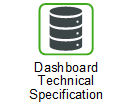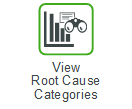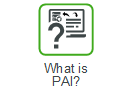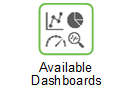SKU Supply Chain History
The SKU Supply Chain History dashboard provides an in-depth analysis of any demand miss, fill rates, and backorder days. Use this dashboard to analyze the following:
• The daily analysis of supply chain history data, such as inventory, stock levels, parts on order.
• The root cause of a demand miss
• The analysis of the daily backorder days and demand missed
This dashboard has three tabs for displaying the supply chain history information.
Tab | Description | ||||||||
|---|---|---|---|---|---|---|---|---|---|
Data | Select this tab to display a listing of the daily supply chain history data. The following columns contain hyperlinks to pages in Servigistics:
| ||||||||
Demand Missed | Select this tab to display a graph of the demand missed. These are the entries in the legend: • Demand Missed • Net On Hand Good • Total Demand | ||||||||
Inventory Projection | Select this tab to display a graph of the inventory projection. These are the entries in the legend: • Net On Hand Good • On Order • Chain Acquired • Chain Relinquished • Order Sent • Safety Stock • ROP • Stock Maximum • Inventory Position |
Things to remember when using this dashboard: • A filter pop-up window is displayed if the dashboard is opened by selecting it from the main menu or by entering the dashboard name in the Go to box. You will need to provide the part number and location in the following format to open the dashboard: PartNumber<PO_PAI_SKU_Separator>Location For example, Part Number = D123 and Location = North and <PO_PAI_SKU_Separator> = __ (double underscore) Using that example, the filter entry would look like this: D123__North • The Total Demand and Demand Missed are calculated for external demand only, it is not the total demand, which includes internal demand and external demand • External demand is identified for non bin locations using the External Forecast streams with demand streams that have the Use In Total field set to Y • The Fill Rate calculation is a day-by-day calculation. The remaining On Hand or Unfullfilled Demand (missed demand) is not carried forward to the next day. • The Past Due Unfulfilled Demand (missed demand) is not considered in the Fill Rate calculation for today. If Backorders are also present together with On Hand in Stock Amount, then the Backorder quantity is subtracted from the On Hand quantity (refer to Fill Rate Calculation for details). • The smallest Demand Detail quantity is fulfilled first to calculate the Lines Filled. • Net On Hand Good is calculated as [(On Hand New+ On Hand Fixed - Backorder - Allocated) + Planned Quantity] Where Planned Quantity is the planned quantity of the host orders arriving today with Effective Available date as today. • On Hand Good is calculated as [(On Hand New+ On Hand Fixed ) – Allocated] |




